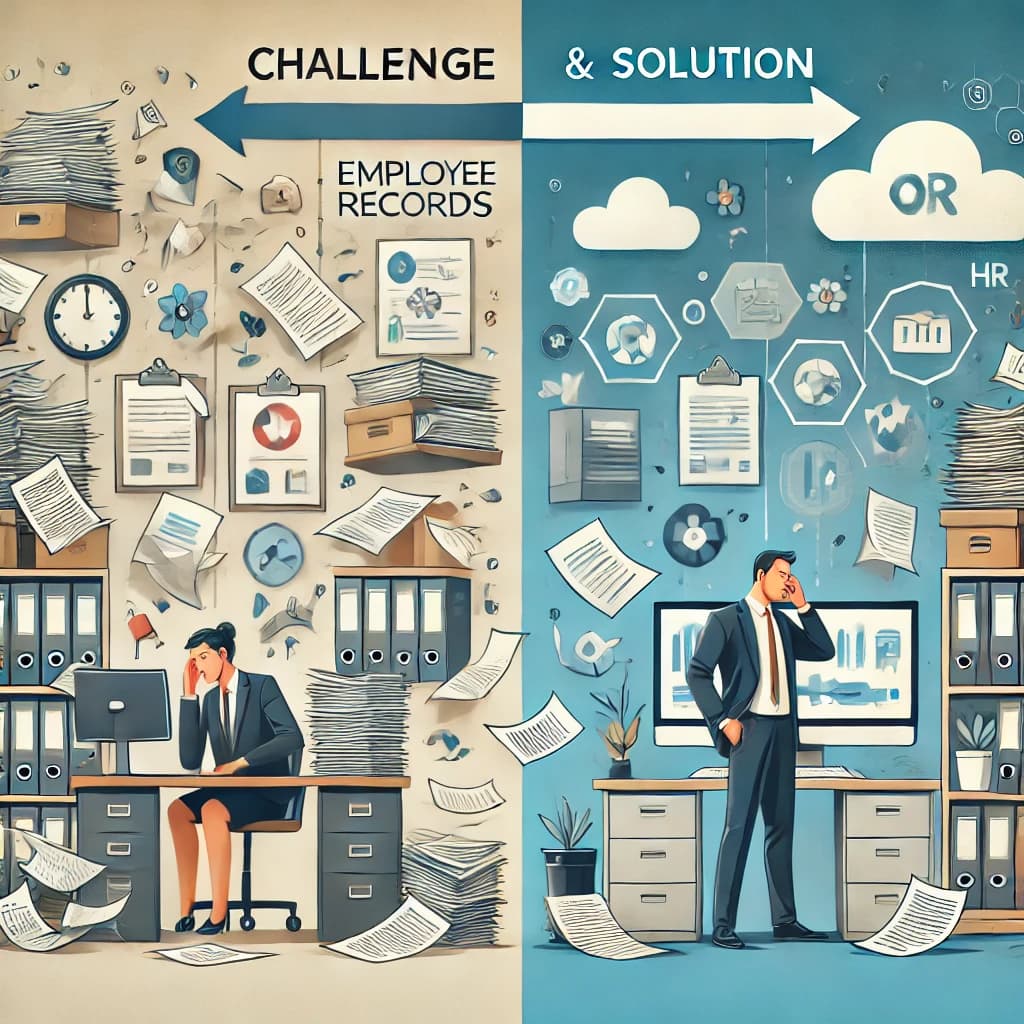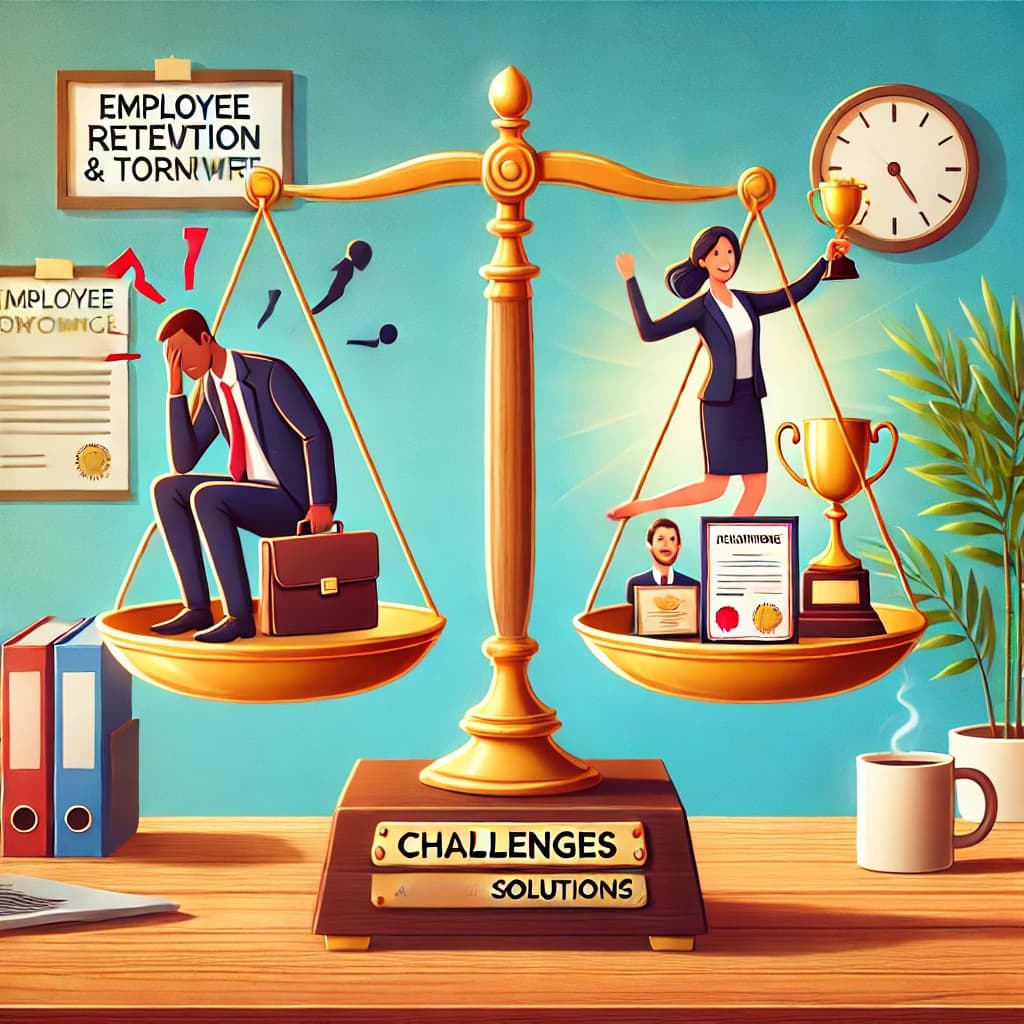Efficient management of employee records is a cornerstone of successful human resource management (HRM). It ensures compliance with labor laws, enhances decision-making, and streamlines HR processes. However, the complexity of managing large volumes of data poses significant challenges for organizations. This article explores the challenges of managing employee records and offers detailed solutions to overcome them.
What Is Employee Records Management?
Employee records management involves collecting, storing, and organizing employee data, including personal details, employment history, performance evaluations, payroll information, and compliance documents. Proper records management ensures data accuracy, confidentiality, and accessibility, which are vital for effective HR operations.
The Importance of Managing Employee Records
- Regulatory Compliance
Accurate recordkeeping helps organizations comply with labor laws, tax regulations, and industry standards, avoiding legal penalties. - Enhanced Decision-Making
Centralized and well-organized records provide actionable insights, enabling better workforce planning and management. - Improved Operational Efficiency
Quick access to employee data reduces administrative burden and speeds up HR processes like payroll, appraisals, and recruitment.
Challenges in Managing Employee Records
1. Data Volume and Complexity
Organizations, especially large ones, must handle vast amounts of employee data. Managing such large volumes manually or using outdated systems is time-consuming and prone to errors.
2. Data Security and Privacy
Employee records often contain sensitive information like social security numbers, bank details, and medical histories. Ensuring data security and complying with privacy regulations such as GDPR is a critical challenge.
3. Compliance Requirements
Different regions have varying legal requirements for maintaining and accessing employee records. Keeping up with these regulations and avoiding non-compliance can be overwhelming.
4. Inadequate Storage Solutions
Relying on paper-based systems or unstructured digital files can lead to data loss, duplication, or inaccessibility.
5. Integration with Other Systems
Employee records often need to sync with other systems like payroll, performance management, and benefits platforms. Lack of integration creates inefficiencies and data inconsistencies.
6. Time-Consuming Retrieval Processes
Retrieving specific data from unorganized records takes time and reduces HR productivity, especially during audits or urgent decision-making processes.
7. Cost of Modern Solutions
Transitioning from manual or legacy systems to modern HR software can be expensive, making it challenging for small and medium-sized enterprises (SMEs).
Solutions for Managing Employee Records
1. Adopt a Centralized Digital System
- Implement a robust Human Resource Management System (HRMS) to centralize data storage and management.
- Ensure the system supports cloud-based solutions for accessibility and scalability.
- Use tools with user-friendly dashboards for easy navigation and data retrieval.
2. Ensure Data Security and Privacy
- Encrypt sensitive data and use secure servers to store information.
- Implement role-based access control to limit data access to authorized personnel only.
- Regularly update security protocols and conduct audits to identify vulnerabilities.
3. Automate Compliance Management
- Use software that automatically tracks and updates compliance requirements based on jurisdiction.
- Set automated reminders for document renewals and compliance deadlines.
- Maintain audit trails to document all changes and access logs for legal purposes.
4. Invest in Scalable Storage Solutions
- Transition from paper-based records to digital systems using document scanning and Optical Character Recognition (OCR) technology.
- Use cloud storage solutions for secure, scalable, and cost-effective data storage.
- Regularly back up records to prevent data loss during system failures.
5. Integrate Systems for Seamless Operations
- Choose HR software that integrates with payroll, attendance, and performance management systems.
- Ensure compatibility with other enterprise software like Enterprise Resource Planning (ERP).
- Use Application Programming Interfaces (APIs) to sync data across platforms.
6. Streamline Retrieval Processes
- Organize records using standardized naming conventions and tagging for easier searchability.
- Implement advanced search features, such as filtering by date, department, or role, in HR software.
- Train HR personnel on effective search and retrieval techniques.
7. Opt for Cost-Effective Solutions
- For SMEs, choose affordable yet reliable tools like open-source HR software or subscription-based platforms.
- Partner with software providers offering flexible payment plans and scalable features.
- Evaluate free trials or demos before committing to a solution.
Best Practices for Managing Employee Records
- Regularly Update Records
Keep employee data current by updating records after promotions, role changes, or address updates. - Ensure Data Accuracy
Conduct periodic audits to verify data accuracy and eliminate inconsistencies. - Classify Data Appropriately
Segregate data into categories like payroll, benefits, performance, and compliance for easier management. - Train HR Staff
Provide training on data management, privacy laws, and software usage to HR personnel. - Establish a Data Retention Policy
Define the duration for which records must be retained and the process for securely disposing of outdated data.
How Technology Enhances Employee Records Management
Cloud-Based Solutions
Cloud storage ensures secure, real-time access to records from anywhere, reducing dependency on physical systems.
AI and Automation
Artificial Intelligence (AI) can automate repetitive tasks like data entry and compliance tracking, improving accuracy and saving time.
Mobile Accessibility
Mobile apps linked to HR systems enable employees to access their records, update information, and track benefits on the go.
The Cost of Poor Employee Records Management
Inefficient management of employee records leads to various consequences, including:
- Non-Compliance Penalties: Fines and lawsuits due to missing or inaccurate records.
- Loss of Productivity: Time spent retrieving or correcting data reduces focus on strategic HR activities.
- Employee Dissatisfaction: Errors in payroll or benefits due to poor recordkeeping affect employee morale.
Investing in a robust system mitigates these risks and enhances organizational efficiency.
Real-World Examples of Effective Records Management
Company A: Tech Giant
A multinational technology company implemented an AI-driven HRMS, reducing manual errors and cutting data retrieval time by 50%. It also ensured compliance with diverse international labor laws.
Company B: SME
A small manufacturing firm transitioned to cloud-based record management, reducing storage costs by 40% and improving employee satisfaction with accurate and timely payroll processing.
Conclusion
Managing employee records effectively is crucial for organizational success. By overcoming challenges like data security, compliance, and system integration, businesses can streamline their HR processes, improve employee satisfaction, and achieve operational excellence. Leveraging modern HR technologies ensures secure, efficient, and scalable record management, empowering organizations to focus on strategic growth.





